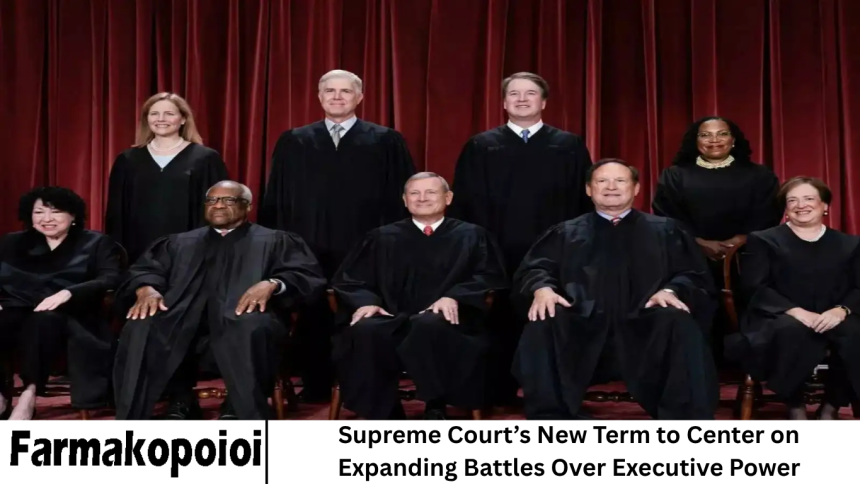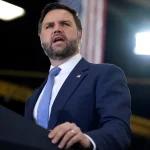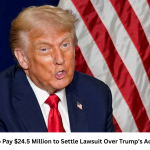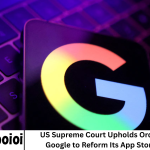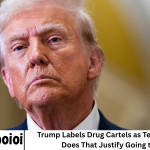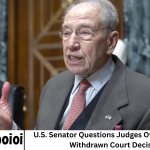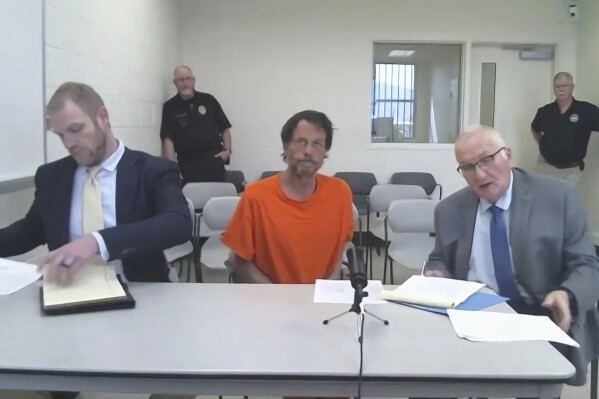As the U.S. Supreme Court begins its new term, the dominant theme emerging from its docket is one of executive power — its scope, limits, and constitutional balance. From presidential immunity to federal regulatory authority, the Court is poised to make decisions that could redefine.
- The Focus on Executive Power
- Key Themes Driving the Term
- Presidential Immunity and Accountability
- The Fate of the “Administrative State”
- Emergency Powers and National Security
- The Separation of Powers and Congressional Oversight
- Immigration and Border Policy Authority
- Executive Orders and Climate Regulation
- The Power to Appoint and Remove Federal Officials
- Historical Context: The Evolution of Executive Power
- The Court’s Ideological Divide
- Public Perception and Political Impact
- What’s at Stake
- Frequently Asked Question
- Conclusion
How much control the White House and federal agencies wield over the nation’s political and administrative life. This term is shaping up to be one of the most consequential in recent memory.
While the justices will review a wide array of cases—ranging from immigration to environmental regulation—the thread connecting them all is a central constitutional question: How far can executive authority extend before it infringes upon the powers of Congress, the courts, or the states?
More Read: U.S. Senator Questions Judges Over Use of AI in Withdrawn Court Decisions
The Focus on Executive Power
The Court’s focus on executive power isn’t accidental. Over the past decade, presidential authority—under both Democratic and Republican administrations—has expanded in response to political gridlock in Congress.
Presidents have increasingly relied on executive orders, administrative rulemaking, and emergency powers to push through major policies. The Supreme Court, now with a solid conservative majority, appears ready to clarify or possibly curtail these powers.
Several pending cases challenge the very foundations of executive branch autonomy, potentially shifting the balance of power back toward Congress or limiting the influence of federal agencies that regulate everyday life.
Key Themes Driving the Term
Presidential Immunity and Accountability
One of the most high-profile cases concerns presidential immunity—specifically, whether a sitting or former president can face prosecution for actions taken while in office. This issue takes on historic significance amid ongoing investigations into former President Donald Trump’s conduct during and after his term.
The Court’s decision could establish new precedent defining the extent of legal immunity a president holds. The ruling will not only affect future presidents but could also impact ongoing criminal proceedings.
Supporters of broad presidential immunity argue that constant legal threats could paralyze the executive branch. Critics, however, warn that such protection could place presidents above the law, undermining the principles of accountability and the separation of powers.
The Fate of the “Administrative State”
Another critical issue concerns the authority of federal agencies to interpret and enforce laws—a doctrine known as Chevron deference. Since 1984, Chevron U.S.A. v. Natural Resources Defense Council has guided courts to defer to agencies’ expertise when statutes are ambiguous.
However, the conservative justices have signaled a willingness to overturn or narrow the Chevron precedent, arguing that it gives unelected bureaucrats too much power at the expense of elected lawmakers.
Cases like Loper Bright Enterprises v. Raimondo challenge whether agencies such as the Environmental Protection Agency (EPA), Federal Communications Commission (FCC), or Securities and Exchange Commission (SEC) can continue to regulate industries without explicit congressional authorization.
A ruling against Chevron deference could significantly weaken federal regulatory agencies, reducing their ability to set rules on issues like climate change, consumer protection, and labor rights.
Emergency Powers and National Security
Another set of cases addresses how presidents use emergency powers—often without direct congressional oversight. These powers, rooted in over a century of statutes, allow presidents to act swiftly in crises ranging from pandemics to military conflicts.
The Court may weigh whether presidents have exceeded their authority by invoking national emergencies to justify controversial actions, such as redirecting military funds for border wall construction or imposing sweeping health mandates.
Such rulings will determine how much unilateral power future presidents hold in defining what constitutes an “emergency” and how far executive discretion can go before it breaches constitutional limits.
The Separation of Powers and Congressional Oversight
The Court will also confront disputes between the executive branch and Congress, including how far lawmakers can go in investigating or limiting presidential actions.
Recent disputes over congressional subpoenas, executive privilege, and funding allocations—particularly in relation to classified information or confidential presidential records—have reignited debates about checks and balances.
This term, the justices are expected to clarify whether the executive branch can defy congressional demands for information, and under what circumstances such defiance becomes unconstitutional.
Immigration and Border Policy Authority
Immigration has long been a flashpoint for executive authority. The Court will review cases concerning the president’s power to set deportation priorities, suspend asylum rules, and enforce border security measures without explicit congressional approval.
In recent years, both Democratic and Republican administrations have used executive discretion to shape immigration enforcement. The Court’s rulings could determine how much flexibility the executive branch retains in implementing immigration law and whether state governments can challenge those actions in federal court.
Executive Orders and Climate Regulation
The Biden administration’s climate policies have sparked new legal challenges over executive orders and EPA authority. Following the landmark West Virginia v. EPA decision in 2022, which limited the agency’s ability to regulate carbon emissions, several states.
And energy companies have filed new lawsuits arguing that President Biden’s environmental agenda again exceeds statutory authority. The Court will revisit the “major questions doctrine”, which requires Congress to clearly authorize any executive action with significant economic or political impact.
This doctrine has become a powerful tool for restricting executive overreach and could be expanded in the upcoming term.
The Power to Appoint and Remove Federal Officials
Another central question concerns the president’s authority to appoint and remove executive branch officials. This issue, though seemingly technical, has far-reaching implications for agency independence.
In previous rulings, such as Seila Law LLC v. Consumer Financial Protection Bureau (2020), the Court curtailed restrictions on presidential control over independent agencies.
This term, justices may again revisit how much insulation agency heads can have from presidential oversight—potentially reshaping the structure of numerous federal institutions.
Historical Context: The Evolution of Executive Power
Understanding this term’s importance requires a look back at how presidential power has evolved throughout U.S. history. The Constitution intentionally divides authority among three branches, but those boundaries have shifted over time depending on national crises, wars, and political transformations.
- Early Republic: Presidents like George Washington and Thomas Jefferson carefully avoided overstepping Congress, establishing precedents of restraint.
- Civil War & Reconstruction: Abraham Lincoln’s suspension of habeas corpus and other emergency actions greatly expanded wartime presidential power.
- 20th Century Growth: Franklin D. Roosevelt’s New Deal and subsequent wartime policies ushered in the modern “administrative state.”
- Post-Watergate Era: The 1970s brought efforts to rein in presidential authority, yet crises like 9/11 and the COVID-19 pandemic reasserted executive primacy.
Now, as political polarization paralyzes Congress, presidents increasingly rely on executive actions to implement policy. The Court’s rulings this term could either reinforce that trend—or decisively pull back on decades of presidential expansion.
The Court’s Ideological Divide
The current Supreme Court, composed of six conservative and three liberal justices, is likely to view executive power through a skeptical lens, especially when it involves regulatory overreach.
Chief Justice John Roberts, while cautious about appearing partisan, has repeatedly emphasized the need to preserve the constitutional separation of powers. Meanwhile, Justices Neil Gorsuch, Clarence Thomas, and Samuel Alito have championed textualist and originalist interpretations that limit executive discretion.
On the other hand, liberal justices—Sonia Sotomayor, Elena Kagan, and Ketanji Brown Jackson—have warned that the Court’s recent trend toward dismantling administrative authority threatens the federal government’s ability to function effectively.
The upcoming term will likely amplify these ideological divisions, producing landmark rulings that may shape the relationship between the presidency and the other branches for generations.
Public Perception and Political Impact
The Court’s increasing involvement in politically charged executive power disputes has fueled public scrutiny. Critics accuse the justices of acting as arbiters of partisan conflict rather than neutral interpreters of law.
For the Biden administration, several pending cases could directly impact its ability to govern—particularly in areas like environmental policy, labor regulation, and immigration enforcement.
Conversely, Republicans view this term as a long-awaited opportunity to reassert constitutional limits on the executive branch, rolling back what they see as decades of bureaucratic overreach.
Regardless of the outcomes, the rulings will carry significant political weight in the 2026 midterm elections and beyond, influencing debates over the role of government, presidential accountability, and the legitimacy of the Supreme Court itself.
What’s at Stake
At its core, this term is about the future of American governance. The Supreme Court’s rulings could reshape:
- Presidential Accountability — Will presidents remain subject to ordinary legal processes?
- Regulatory Authority — Can agencies continue to act without explicit congressional authorization?
- Balance of Power — Will the Court shift authority away from the executive toward Congress or the judiciary?
- Public Trust — Can the Supreme Court maintain credibility amid politically explosive cases?
These questions reach far beyond legal technicalities—they strike at the very heart of democratic governance.
Frequently Asked Question
Why is the Supreme Court focusing so heavily on executive power this term?
Because recent administrations have relied increasingly on executive actions to implement policies amid congressional gridlock. The Court’s conservative majority wants to reassess the constitutional limits of presidential and agency power.
What is “Chevron deference,” and why does it matter?
Chevron deference is a legal doctrine requiring courts to defer to federal agencies’ interpretation of ambiguous laws. If overturned, it could severely limit agency authority to regulate industries, shifting power back to Congress and the judiciary.
Could the Court’s rulings affect ongoing investigations involving former presidents?
Yes. If the Court grants broad presidential immunity, it could affect prosecutions or investigations of former presidents for actions taken while in office, setting a major precedent for future administrations.
How might these cases impact environmental and climate policies?
A decision limiting executive authority could weaken federal environmental regulations. Agencies like the EPA might lose power to implement climate-related rules without explicit congressional approval.
What are the political implications of these executive power cases?
The rulings will influence the balance of power between political parties, shaping how future presidents govern. They could also fuel public debates about judicial partisanship and the role of the Supreme Court.
How does this term compare to past Supreme Court sessions?
Few terms have featured such a concentrated set of cases defining presidential and administrative authority. The outcomes could rival historic decisions like Youngstown Sheet & Tube Co. v. Sawyer (1952) and United States v. Nixon (1974) in shaping executive limits.
When will the major rulings be announced?
Most decisions will be released in spring or early summer 2026, though oral arguments begin in October 2025. The rulings are expected to have immediate and long-lasting effects on U.S. governance.
Conclusion
As the Supreme Court embarks on its new term, the overarching battle over executive power promises to dominate headlines and reshape constitutional law. If recent trends hold, the Court is poised to narrow the scope of executive authority, curbing the reach of presidents and agencies alike.
But in doing so, it may also redefine the capacity of the federal government to respond to modern challenges—from climate change to national security. In short, this term could mark a turning point in American constitutional history.


